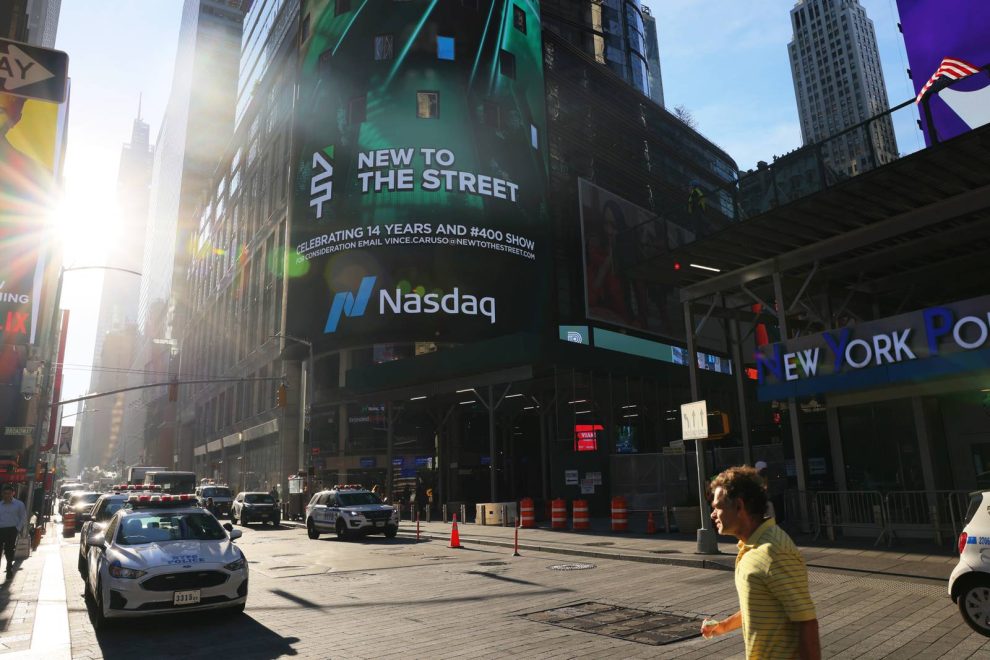Prices paid by U.S. households surged higher in September as a wide range of goods and services became more expensive.
Prices rose 8.2 percent compared with a year earlier, the latest Consumer Price Index showed on Tuesday, evidence that the price stability sought by the Federal Reserve remains an elusive and distant destination.
Compared with August, prices were up 0.4 percent, the Department of Labor’s Bureau of Labor Statistics said.
Core CPI, which strips out volatile food and energy prices, rose 6.6 percent compared with a year ago. That is the highest rate of core inflation since 1982, surpassing the recent 6.4 percent highs hit in February and March. For the month, core prices were up 0.6 percent.
Economists had expected the index to be up 0.2 percent on a monthly basis and 8.1 percent compared with a year ago. Core CPI was forecast as rising 0.4 percent month-to-month and 6.5 percent compared to a year ago.
The monthly figures show inflation is accelerating. After falling to zero in July, the headline consumer price index has risen for two straight months. In August it was rising at a 0.12 percent rate. Core prices were up 0.31 percent in July and 0.56 percent in August.
The year-over-year headline figure was slightly below the 8.3 percent recorded in September but the core figure was higher than August’s 6.5 percent.
Inflation would have been even higher if not for declining energy prices. Energy commodities fell 4.7 percent in the month, although they are up 19.7 percent compared with a year ago. Gasoline prices fell 4.9 percent for the month but are still up 18.2 percent from a year ago. This provided some relief to price pressures but that is likely to be short-lived as gas prices are once again rising. Electricity prices rose 0.4 percent and are up 15.5 percent for the year. Piped natural gas prices jumped 2.9 percent and are up 33.1 percent for the year.
Food prices rose 0.8 percent in September, matching the previous month’s figure. Compared with a year ago, prices are up 11.2 percent. Prices of food purchased for home consumption—known to the rest of us as groceries—rose 0.7 percent for the second straight month. These are up 13.0 percent compared with a year ago.
There was some cooling of inflation in core goods, excluding energy and food. The monthly figure was flat, down from 0.5 percent a month ago. On a 12-month basis, core goods prices are up 6.6 percent. Clothing prices fell 0.3 percent in September and are up 5.5 percent from a year ago. New vehicle prices rose 0.7 percent and are up 9.4 percent from a year ago. Used cars and trucks prices fell 1.1 percent but are up 7.2 percent from a year ago.
Core services, which exclude energy services, rose by a sharp 0.8 percent for the month and are up 6.7 percent from a year ago. The medical care index rose 0.8 percent in September. The shelter index rose 0.7 percent for the second month in a row and is now up 6.6 percent from a year ago.
The news sent stock futures prices plunging, as investors revised their views of the likely path of the Federal Reserve’s rate hikes to reflect more inflation and higher rates. The market-implied odds of a 75 basis point hike at the Fed’s next meeting rose from 84 percent on Wednesday to 99 percent. The odds of another 75-point hike in December nearly doubled to 62 percent.
Before the CPI was released, futures prices were implying stocks would rise sharply at the market open. That suggested that many investors were expecting the inflation figures would be even better than expected. Last night’s Breitbart Business Digest explained why analysts and investors continue to underestimate the strength of inflation in the U.S. economy.
The economy has been experiencing the worst inflation in over forty years. Excluding this year, the September year-over-year figure is the highest since 1981. After initially declaring that inflation would be transitory last year, the Fed is now engaged in a pitched battle for price stability that chairman Jerome Powell has warned will inflict pain on businesses and households.
Fed officials have been raising interest rates since March, including three straight hikes of an unusually large 75 basis points. This has taken the Fed’s benchmark rate from near zero to above three percent. Market indications show investors expect the Fed will have raised its target rate by 4.5 percentage points by the end of the year.
The Fed targets the overnight rate banks pay to each other to borrow reserves and also pays banks interest on reserves they hold. Because longer-term yields reflect the expected path of short-term rates, the Fed’s tightening has pushed those up, raising the costs of borrowing for the government, home buyers and consumers, and businesses. The yield on 10-year Treasuries has jumped from around 1.5 percent at the close of last year to around four percent now. The average 30-year fixed rate on home loans has more than doubled, rising from 3.2 percent to 6.7 percent. The yield on riskier corporate “junk” bonds has marched upward from 4.35 percent at the end of last year to 9.42 percent today.
Yields move in the opposite direction of bond prices, meaning bondholders have faced large losses from these rapid changes. Stocks are down sharply as well, in part because investors discount future cash flows more when interest rates are higher. As well, investors fear that the Fed’s tightening campaign will push the U.S. economy into a recession that will hurt corporate earnings. With bond and stock prices both falling together, traditionally diversified investor portfolios have suffered unusually large losses.
Wages have not kept up with inflation. As a result, real wages have fallen. In September, real wages fell 0.1 percent, the result of a 0.3 percent increase in wages and the 0.4 percent price increase. Real average hourly earnings decreased 3.0 percent over the past 12 months. The change in real average hourly earnings combined with a decrease of 0.9 percent in the average workweek resulted in a 3.8-percent decrease in real average weekly earnings over the year.
The Fed sees the labor market as highly imbalanced, with demand for workers far outstripping the supply, contributing to inflationary pressures. Unemployment has been extremely low by historical standards and fell to 3.5 percent in September. Job vacancies fell by 1.1 million in September but remain extremely high by historical standards. The ratio of job vacancies to unemployed persons stands at around 1.7—a historically unprecedented level prior to the post-pandemic period. This summer it was as high as two-to-one. A normal level is considered to be around one-to-one.
Economists are divided about what caused the current surge in inflation. Biden administration officials have sought to blame corporate greed, supply shocks from the pandemic and reopening, and Russia’s invasion of Ukraine. Most economists believe that inflation has been caused by a combination of supply constraints and a surge in demand fueled by accommodative monetary policy and stimulus spending. In March of last year, President Joe Biden successfully pushed for a $1.9 trillion stimulus bill despite warnings from prominent economists—most prominently Larry Summers—that it would overheat the economy. This has led many to describe current inflation as “Bidenflation.”
Capitol Hill Democrats recently passed a piece of legislation pushed for by the Biden White House called the Inflation Reduction Act that most analysts have concluded will not reduce inflation in the near term. In reality, it is a climate change and health care spending bill that is likely to add to inflationary pressures over the next couple of years because it increases the budget deficit before measures that are expected to raise revenues kick-in years from now.
Story cited here.
























